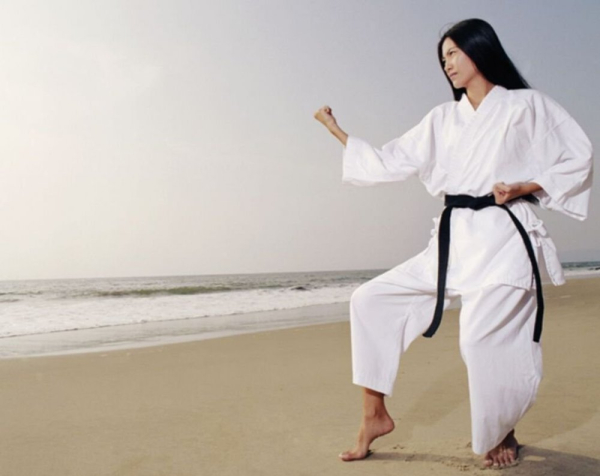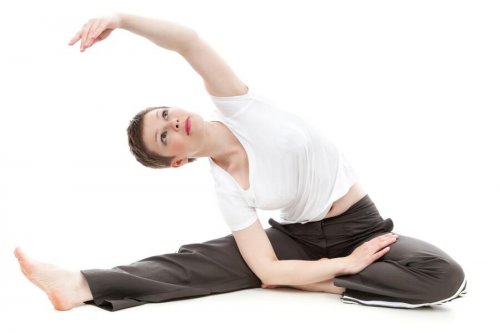
Many likely remember how, in the early 1990s, our compatriots rediscovered (and many for the first time) the fascinating world of Eastern martial arts. True, martial arts were practiced in the Soviet Union even during the “karate ban,” but those were purely pragmatic sports. With the lifting of the ban, a wide variety of martial arts flooded our country, immediately finding adherents. And perhaps the main motivation for practicing them was to learn to defend oneself. At the time, this was justified: times were turbulent, and self-defense was a valuable skill. Moreover, it was consistent with the original purpose of martial arts: to effectively inflict harm on one's fellow human beings.
But time passes, and today's city dweller rarely has to fight robbers armed with knives and clubs in back alleys. Warfare also uses weapons entirely different from swords and spears. In fact, martial arts, as such, are primarily sought after in modern cities by criminals (and even then, only a small percentage) and law enforcement officers. Nevertheless, martial arts remain popular. And for good reason: they are an excellent, time-tested way to develop physical fitness (in modern parlance, fitness). They also help cultivate and develop a range of psychological qualities.
For others, martial arts are a way to connect with the cultures of other peoples. And this is a normal evolution of martial arts in the modern world. It's just that every practitioner must clearly answer the question of the purpose of their training in order to pursue that goal directly and not harbor unnecessary illusions.
As for martial arts as fitness (I use this term in a broad sense, to refer to “non-applied” martial arts), they can provide a comprehensive, well-rounded physical preparation. This, of course, requires a serious approach. As for acquiring self-defense skills along the way, that's a matter of luck. If this isn't a specific goal, then acquiring them depends on two factors: the practitioner's and the trainer's commitment to achieving this specific result, and the specific martial art. Regarding the second factor, training should at a minimum include some form of contact sparring.
However, we are talking about something else now.
As a rule, training, regardless of the type, includes a warm-up, general and special physical training, technique practice and (not always) sparring exercises.
Sometimes the entire first part of a workout is called a “warm-up”—in other words, the workout is divided into “warm-up” and “technique.” However, it's more accurate to consider the warm-up to be the warm-up portion, which takes up no more than 10% of the workout time. Physical training usually follows, aimed at developing strength, endurance, and flexibility. The level of intensity varies greatly, and some schools completely neglect physical training. So, when choosing a school, I recommend inquiring about the importance of physical training in the chosen martial art and specific section.
For example, wrestling (most often jujutsu among Eastern martial arts) requires serious physical training, as do other contact sports (taekwondo, several karate styles). Goju-ryu, a traditional (old) karate style, also requires serious strength training.
Let me remind you that we're talking about fitness training for adults who aren't interested in a sports career. It's only natural that the approach to training at schools focused on training athletes is completely different.
In general, you can focus on the role of sparring, especially contact sparring, in your training. As a rule, a significant amount of sparring will also mean serious physical training with the corresponding loads. If not, only your specific section coach can clarify the loads for you.
Beginners often ask whether they can exercise despite certain health issues. Of course, this question should be directed primarily to a doctor. But! Doctors have their own perspective, and it's easier (and more formally correct) for them to simply deny permission. But as we all know, if you really want to, you can. In any case, plenty of people (myself included) exercise despite having contraindications. Just be prepared to take care of your health yourself. Incidentally, it's common practice for clubs to require a medical certificate, so if your contraindications are truly serious, you'll have to negotiate with either a doctor or a trainer. Alternatively, you can look for a club that doesn't require a certificate—but those are becoming increasingly rare.
Let's assume you've been cleared to join a class. Now the main principle: do everything sensibly. This means always informing your coach about any health issues. If necessary, inform your training partners as well: for example, if poor eyesight prevents you from taking blows to the head, or if back problems prevent you from falling. And choose adequate training partners. In the worst case, if you're categorically rejected, try to arrange private lessons with the coach. And in any case, be prepared for the possibility that you won't be able to do some exercises. Most coaches are generally fine with this. They aren't working with professionals, and people with health issues are not uncommon in the classes.
Choosing a club and instructor is crucial. I'll say that selection criteria do exist, of course, but they're rather rough. While Western sports systems have generally accepted methods that all coaches roughly follow, Eastern systems are the opposite. While consistency in methods is better in traditional sports, in “traditional” ones it's a matter of luck. Neither belts, ranks, titles, nor a list of victories mean anything here. They can be a great fighter and yet be completely incompetent in teaching. Conversely, an excellent instructor might have no degrees at all and be a very mediocre fighter.
A good criterion is the trainer's ability to clearly and competently explain technique. During a trial session, pay attention to how they explain, correct, and whether you understand the explanations. If there are older students in the room, pay attention: what have they learned? How do they move? Students are an indicator of the trainer's skill as a methodologist, not as a fighter.
These days, the days of “wild” sections are a thing of the past, and the vast majority of instructors belong to federations. If formal advancement (ranks, belts, and perhaps even competition participation) is important to you, pay attention to this. Find out which federation your instructor belongs to, and if necessary, search for information about it online. Keep in mind that a federation can refer to a large international organization or a very small one. Large organizations typically have significant international connections and conduct seminars with visiting masters; therefore, certifications obtained through them carry greater weight. However, it's not a given that a “pocket” federation has a lower level of instruction or doesn't invite “natives” of the martial art's homeland to seminars. In any case, consider the seriousness of the teaching. As a general rule, it's better if coaching is the instructor's primary profession rather than a means of supplementary income.
There's another category of instructors: the so-called “home-brew” trainers, as they're often called. These are typically people who teach their own interpretation of a martial art, often outside of clubs and federations. What can one say about them? Those in the know generally warn against such schools. Because what the instructor learned, what they teach, and how they teach it are highly questionable. The quality of instruction in such schools can be highly questionable.
But! It's precisely among such instructors that you'll find true masters, sincere enthusiasts, and excellent instructors. It's very simple: as a rule, such instructors have found their own unique “thing,” developed a system tailored to their needs, and know this system intimately. If their individual method suits you, or their instructor is skilled at finding a way to connect with their students, consider yourself lucky. I've encountered such instructors more than once, and my experience with them has been exceptional.
But there are also outright charlatans and simply poorly prepared individuals. So, I repeat: watch how the instructor conducts the class, observe the senior students (don't forget to inquire about their training experience and previous martial arts experience). Basically, as in any other case: do it wisely.






